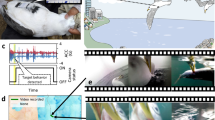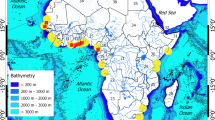Abstract
Recreational exposure to surface waters during periods of increased pathogen concentration may lead to a significantly higher risk of illness. However, estimates of elementary exposure factors necessary to evaluate health risk (i.e., usage distributions and exposure durations) are not available for many non-swimming water-related activities. No prior studies have assessed non-swimming water exposure with respect to factors leading to impaired water quality from increased pathogen concentration, such as weather condition (rain events produce increased runoff and sewer overflows) and type of day (heavy recreational periods). We measured usage patterns and evaluated the effect of weather and type of day at eight water sites located within Philadelphia, by using a novel “time lapse photography” technology during three peak recreational seasons (May–September) 2008–2010. Camera observations validated with simultaneous in-person surveys exhibited a strong correlation (R2=0.81 to 0.96) between the two survey techniques, indicating that the application of remote photography in collecting human exposure data was appropriate. Recreational activities usage varied more on a temporal basis than due to inclement weather. Only 14% (6 out of 44) of the site-specific activity combinations showed dry weather preference, whereas 41.5% (17 out of 41) of the combinations indicated greater usage on weekends as compared with weekday. In general, the log normal distribution described the playing and wading duration distribution, while the gamma distribution was the best fit for fishing durations. Remote photography provided unbiased, real-time human exposure data and was less personnel intensive compared with traditional survey methods. However, there are potential limitations associated with remote surveillance data related to its limited view. This is the first study to report that time lapse cameras can be successfully applied to assess water-based human recreational patterns and can provide precise exposure statistics for non-swimming recreational exposures.
This is a preview of subscription content, access via your institution
Access options
Subscribe to this journal
Receive 6 print issues and online access
$259.00 per year
only $43.17 per issue
Buy this article
- Purchase on Springer Link
- Instant access to full article PDF
Prices may be subject to local taxes which are calculated during checkout





Similar content being viewed by others
References
Cordell H.K. Outdoor Recreation for 21st Century America: A Report to the Nation: The National Survey on Recreation and the Environment. Venture publishing Inc., State College, PA, 2004.
Dorevitch S., Panthi S., Huang Y., Li H., Michalek A.M., and Pratap P., et al. Water ingestion during water recreation. Water Res 2011: 45 (5): 2020–2028.
Given S., Pendleton L.H., and Boehm A.B. Regional Public Health Cost Estimates of Contaminated Coastal Waters: A Case Study of Gastroenteritis at Southern California Beaches. Environ Sci Technol 2006: 40 (16): 4851–4858.
Turbow D.J., Osgood N.D., and Jiang S.C. Evaluation of recreational health risk in coastal waters based on enterococcus densities and bathing patterns. Environ Health Perspect 2003: 111 (4): 598–603.
Kay D., Fleisher J.M., Salmon R.L., Jones F., Wyer M.D., and Godfree A.F., et al. Predicting likelihood of gastroenteritis from sea bathing: results from randomised exposure. Lancet 1994: 344 (8927): 905–909.
Soller J.A., Olivieri A.W., Crook J., Cooper R.C., Tchobanoglous G., and Parkin R.T., et al. Risk-Based Approach To Evaluate the Public Health Benefit of Additional Wastewater Treatment. Environ Sci Technol 2003: 37 (9): 1882–1891.
Sidman C, Swett R, Fik T, Fann S, Fann D, and Sargent B . A Recreational Boating Characterization for the Greater Charlotte Harbor. In: Florida Department of Environmental Protection, and Florida Coastal Management Program (eds.): Florida, September 2005.
Prüss A. Review of epidemiological studies on health effects from exposure to recreational water. Int J Epidemiol 1998: 27 (1): 1–9.
Wade T.J., Pai N., Eisenberg J.N.S., and Colford J.M. Do US Environmental Protection Agency Water Quality Guidelines for Recreational Waters Prevent Gastrointestinal Illness? A Systematic Review and Meta-analysis. Environ Health Perspect 2003: 111 (8): 1102–1109.
Roberts J.D., Silbergeld E.K., and Graczyk T. A Probabilistic Risk Assessment of Cryptosporidium Exposure Among Baltimore Urban Anglers. J Toxicol Environ Health A 2007: 70 (18): 1568–1576.
Stone D.L., Harding A.K., Hope B.K., and Slaughter-Mason S. Exposure Assessment and Risk of Gastrointestinal Illness Among Surfers. J Toxicol Environ Health A 2008: 71 (24): 1603–1615.
Geosyntec. Dry and Wet Weather Risk Assessment of Human Health Impacts of Disinfection vs. no Disinfection of the Chicago Area Waterways System (CWS), In: Chicago M.W.R.D.o.G. (ed.), Geosyntec Consultants, Chicago, IL, 2008.
Rijal G., Petropoulou C., Tolson J.K., DeFlaun M., Gerba C., and Gore R., et al. Dry and wet weather microbial characterization of the Chicago area waterway system. Water Sci Technol 2009: 60 (7): 1847–1855.
Rijal G., Tolson J.K., Petropoulou C., Granato T.C., Glymph A., and Gerba C., et al. Microbial risk assessment for recreational use of the Chicago area waterway system. J Water Health 2011: 9 (1): 169–186.
Kollias L ., Zmuda J ., Rijial G ., and Granato T . Expert Review Report regarding USEPA's Water Quality Criteria for Bacteria -1986: Application to Secondary Contact Recreation. Research and Development Department, Metropolitan Water Reclamation District of Greater Chicago, IL, July 2006.
Kollias L., Granato T., Lanyon R., Dennison S., Rijal G., and Zhang H. Mwrdgcs support of the use attainability analysis for the chicago area waterways. Proc Water Environ Federation 2008: 2008 (9): 6136–6147.
Guggisberg C.A. Early Wildlife Photographers. Taplinger Pub. Co. (New York), New York, 1977.
Booms T.L., and Fuller M.R. Time-Lapse Video System Used to Study Nesting Gyrfalcons (Uso de un sistema de video de lapsos de tiempo para estudiar el anidaje de Falco rusticolus). J Field Ornithol 2003: 74 (4): 416–422.
Cutler T.L., and Don E.S. Using Remote Photography in Wildlife Ecology: A Review. Wildl Society Bull 1999: 27 (3): 571–581.
Schelkens P, Ebrahimi T, Cristobal G, and Truchetet F, In: (eds.). Detection of Activity Pattern Changes Among Elderly with 3D Camera Technology 2008: 7000. Strasbourg, France, SPIE, pp. 70000O–70010.
Andersson I.-M., Niemelä R., Rosén G., and Säämänen A. Control of Styrene Exposure by Horizontal Displacement Ventilation. Appl Occup Environ Hyg 1993: 8 (12): 1031–1037.
Gressel M.G., Heitbrink W.A., McGlothlin J.D., and Fischbach T.J. Real-Time, Integrated, and Ergonomic Analysis of Dust Exposure During Manual Materials Handling. Appl Industr Hyg 1987: 2 (3): 108–113.
Hakkola M Customer Exposure to Gasoline Vapours at Service Stations Measured with the Finn-Pimex Method, 26th International Commission on Occupational Health (ICOH), Singapore, 2000.
Kaur S., Clark R.D.R., Walsh P.T., Arnold S.J., Colvile R.N., and Nieuwenhuijsen M.J. Exposure visualisation of ultrafine particle counts in a transport microenvironment. Atmospheric Environment 2006: 40 (2): 386–398.
Rosen G. A Review of Video Exposure Monitoring as an Occupational Hygiene Tool. Ann Occup Hyg 2005: 49 (3): 201–217.
Wang J.D., Solo-Gabriele H.M., Abdelzaher A.M., and Fleming L.E. Estimation of enterococci input from bathers and animals on a recreational beach using camera images. Mar Pollut Bull 2010: 60 (8): 1270–1278.
Graczyk T.K., Sunderland D., Tamang L., and Breysse P.N. Impact of bathers on levels of Cryptosporidium parvum oocysts and Giardia lamblia cysts in recreational beach waters. Water Res 2007: 41 (15): 3483–3489.
Varness K.J., Pacha R.E., and Lapen R.F. Effects of dispersed recreational activities on the microbiological quality of forest surface water. Appl Environ Microbiol 1978: 36 (1): 95–104.
Haas C.N., Rose J.B., and Gerba C.P. Quantitative Microbial Risk Assessment. Wiley, New York, 1999.
Acknowledgements
This work was funded by a local public utility. We additionally thank Dr. Timothy Bartrand, Ben Cohen and Edward Lennon for their valuable assistance and project support.
Author information
Authors and Affiliations
Corresponding author
Ethics declarations
Competing interests
The authors declare no conflict of interest.
Rights and permissions
About this article
Cite this article
Sunger, N., Teske, S., Nappier, S. et al. Recreational use assessment of water-based activities, using time-lapse construction cameras. J Expo Sci Environ Epidemiol 22, 281–290 (2012). https://doi.org/10.1038/jes.2012.4
Received:
Accepted:
Published:
Issue Date:
DOI: https://doi.org/10.1038/jes.2012.4
Keywords
This article is cited by
-
Exposure parameters and health risk of Cryptosporidium and Giardia in the recreational water activities for urban residents in China
Environmental Science and Pollution Research (2022)



